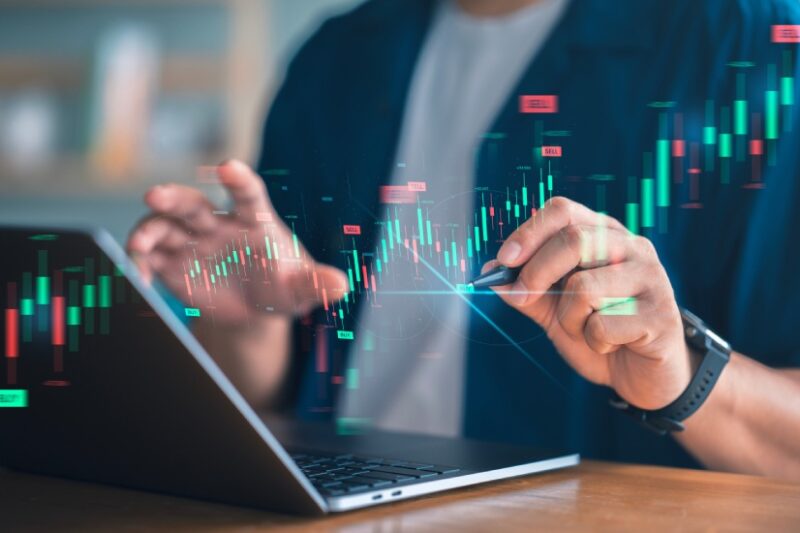In the fast-paced world of trading, where milliseconds can make or break a deal, the allure of automated trading strategies has captured the imagination of many. The possibility of executing trades with pinpoint precision—free from the frailties of human emotion—promises a tantalizing edge in the markets.
However, the transition from backtesting to going live is not merely a leap of faith; it demands rigorous validation. This article dives into the critical process of testing your automated trading strategies, equipping you with essential techniques and insights to ensure that your algorithms are not only efficient on paper but also resilient in the unpredictable theater of real-time trading. Whether you’re utilizing an automated trading platform or building custom solutions, thorough testing ensures that your strategy can adapt to varying market conditions and avoid unexpected pitfalls.
As we navigate through these methodologies, you’ll uncover the nuances that separate mere theoretical success from tangible, sustainable profits, enabling you to step confidently into the trading arena.
Setting Clear Objectives for Your Strategy

Setting clear objectives for your strategy is the cornerstone of successful automated trading. Before you dive into the complexities of market algorithms and trading indicators, ask yourself what you truly want to achieve. Do you seek consistent gains over time, or are you enticed by high-risk, high-reward ventures? Perhaps your goal is to enhance your understanding of market dynamics while generating passive income.
Each objective requires a tailored approach—a meticulous plan that outlines risk tolerance, expected returns, and the timeframe for your trades. This isn’t just about crunching numbers; it’s about creating a blueprint that reflects your personal goals and trading philosophy.
Establishing these targets not only guides your strategy development but also enables you to measure performance accurately. As you carve your path in the trading landscape, let your objectives act as both a compass and a measure of success, ensuring that your automated trading journey remains aligned with your aspirations.
Data Collection and Preparation

Data collection and preparation is the foundational bedrock upon which your automated trading strategy stands. To delve into the depths of market data, start by identifying relevant sources, such as historical price feeds, volume indicators, and macroeconomic reports.
Equally vital is ensuring this data is clean and devoid of anomalies that could skew your analysis—imagine trying to build a masterpiece while wrestling with a broken brush. Scrutinize your datasets for missing values or outliers; employ techniques like interpolation or exclusion where necessary.
Moreover, consider the timeframes youll be working with—are you analyzing daily candles, hourly trends, or minute fluctuations? Each choice comes with its unique ramifications. Ultimately, a well-structured dataset not only enhances the reliability of your backtesting but also instills confidence in the decisions you’ll make once you transition from simulating trades to engaging with real money in the market.
The Foundation of Strategy Validation

The foundation of strategy validation in automated trading is not merely a step in the process; it’s the bedrock upon which successful trading thrives. At its core, this involves rigorous testing and analysis, ensuring that strategies perform optimally under a variety of market conditions.
Imagine a ship setting sail: without a sturdy hull and a well-charted course, it risks sinking in turbulent waters. Similarly, trading strategies must undergo comprehensive backtesting, simulating historical data to reveal their strengths and weaknesses.
But it doesn’t stop there; forward testing in a demo environment offers a glimpse into how these strategies might react in real time, where the unpredictable nature of the market can expose unforeseen vulnerabilities. By embracing a thorough validation process, traders can build confidence in their approaches, transforming theoretical models into practical tools that navigate the ever-shifting tides of financial markets.
Each test, each tweak, becomes a vital component in crafting a strategy that not only survives but thrives amidst volatility.
Conclusion
In conclusion, thoroughly testing your automated trading strategies is a crucial step before committing real capital in live markets. By employing techniques such as backtesting, forward testing, and paper trading, you can gain valuable insights into the performance and robustness of your strategies.
Utilizing a reliable automated trading platform can further streamline the testing process, enabling you to analyze various market scenarios and refine your approach with confidence. Taking the time to rigorously evaluate your strategies will not only help mitigate risks but also enhance your overall trading success in the long run.


